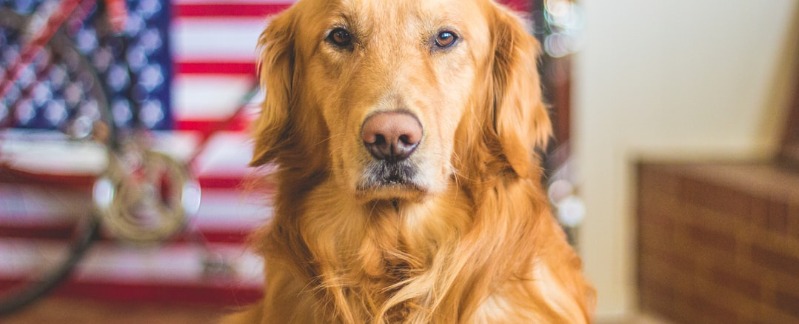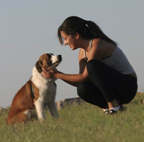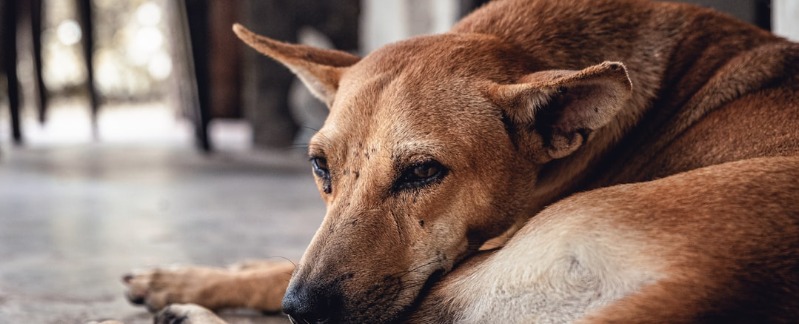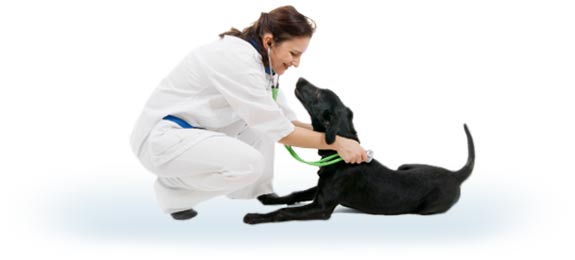You thought it would never happen: the exuberant puppy who chewed through three couches and took three years to train to heel is finally slowing down! You start seeing changes in your dog around the age of five or six (depending on the breed), and before you know it, you have a canine senior citizen.
The Aging Process
Contents
As frightening as it is to realize that time is catching up with your dog, there are many great aspects to this stage in your dog’s life. You and she have a close relationship, and you know what to expect from each other. Your dog is most likely more attentive. She sleeps more, despite her love of going to the beach or going for walks, and is typically more placid, reliable, and even-tempered.
In fact, they may be the most delightful years you’ll have with your dog. She’ll enjoy vehicle rides with you and will patiently wait while you run errands. If you tell her you want to play ball, she’ll be the first out the door, but she’ll be ready to stop when you’re tired of it. Take the time to savor and appreciate these times.
A dog’s body ages in several ways similar to a human’s: metabolism slows; the immune system slows; arthritis may develop; vision, hearing, and smell might be compromised; bladder and bowel control may be lost; and there is usually a general slowing down.
It’s difficult to watch your dog go through these changes, and it can be difficult for you and your family as well. Your elderly dog may be unable to sleep through the night, and you may awaken to find accidents in the house. Older dogs see these are mistakes and may look at you with genuine regret in their eyes. Take pity on your senior dog and assure her that you understand. Set your alarm an hour or two earlier in the morning so your dog doesn’t have to wait as long at night.
When your dog reaches the age of six to eight years, you should take her to the vet for a senior examination. Even if she appears to be in good health, your veterinarian can do any tests she deems necessary to assess your dog’s condition. Blood tests, urine testing, and vision and hearing tests are examples of these. Your veterinarian should already be familiar with your dog and be able to provide impartial feedback on her overall condition.
Feeding Your Older Dog
Nutrition is a crucial influence on total geriatric health. If your senior citizen consumes too much fat and not enough fiber, he may not only grow obese, but he may also become constipated or experience other gastrointestinal disturbances. Also, just as humans become allergic to items that did not previously bother them as they age, dogs do the same. The food you’ve been feeding him for most of his life may now be causing him to itch or sneeze, or it may be bothering him in other ways.
A dog’s protein, fat, carbohydrate, vitamin, and mineral requirements change with age. A growing puppy or an active dog in his prime will use far more energy than a semiretired, couch-loving elderly dog. To select the appropriate diet for your dog, consult with your veterinarian about his or her level of exercise. There are currently dog foods for growth, maintenance, and senior years, as well as diets for specific health conditions, “lite” foods, and feeds enriched with beneficial vitamins and minerals such as glucosamine and chondroitin. Investigate which supplements may be beneficial to your elderly dog and discuss them with your veterinarian.
Another temptation is to indulge your senior friend with special treats. It is natural to spoil those we care about; nevertheless, keep in mind that the more weight your dog carries, the worse his overall health will be. You may be rewarding him in the short run, but such rewards may result in less time with your dog in the long run. If you offer him a special treat, simply reduce his regular food for a day or two. Ideally, you’ll have maintained your dog healthy and trim throughout his life, making it easier to keep him in this condition as he gets older.
You should also provide higher food and water dishes for your elderly large dog to eat and drink from. This reduces the strain on his back, neck, and shoulders as he eats and drinks.
Grooming Your Older Dog
Your dog will benefit from regular grooming throughout her life. You may feel less inclined to maintain her looking her best as she ages and her skin gets less supple, her fur less shiny, and her ears and breath a little stinkier. However, this is when dogs appear to enjoy being groomed the most. Older dogs appear to like the attention they receive from grooming and seem to grasp that they look better with your assistance.
Coat and Skin
Brushing your dog on a regular basis helps keep shedding under control and will continue to stimulate the natural oils in his skin that keep his skin and coat looking and feeling their best. Regular brushing will help prevent mats from growing in the coat of dogs with longer hair that spend more time lying down. For older, more sensitive canines, detangling them can be painful.
Seniors should still be bathed, and they may require more frequent baths if they inadvertently soil themselves. Pay close attention to the temperature of the water you use, take care bringing your dog in and out of the tub, and prevent drafts. For rapid cleanups, keep a “waterless” shampoo on hand.
Gums and teeth
You’re in big danger if you haven’t been keeping your dog’s teeth and gums clean and healthy up until now. A lifetime’s accumulation of plaque and tartar can have devastating consequences for the teeth and gums. Your dog’s teeth may begin to fall out, exposing the mouth to infection. She will almost certainly have foul breath, making her a less loving companion in close quarters (through no fault of her own!). Her gums may get irritated to the point where she is unable to consume the kibble that is her primary source of nutrition.
Eyes and ears
Keep your senior dog’s eyes and ears free of debris and waxy buildup. Both tend to worsen with age, so wipe your dog’s face with a soft cloth every day and gently wipe her ears with a cotton ball or gauze pad. Please notify your veterinarian if you see anything out of the ordinary. Excessive discharge, redness or swelling in or around the eyes, cloudiness in the pupil (a sign of cataracts), or other symptoms may be present.
If you’ve been keeping up with frequent veterinary checkups, you should be aware of your dog’s dental and oral health. Your dog may have had anaesthetic to get her teeth cleaned. The truth is, you don’t want to put an older dog to this surgery unless absolutely necessary, because older dogs are more susceptible to the negative effects of anesthesia. Continue brushing!
Exercising Your Older Dog
Your dog may be slowing down, but that doesn’t mean he can’t go outside. In fact, if you keep him active, he’ll be happier and healthier. This does not imply repeating the five-mile runs you performed when he was six or seven. Consider that his joints are tighter, his energy levels are lower, and his systems are working harder to keep up. Every dog is an individual, and the amount of exercise they can tolerate varies depending on the breed, age, usual activity level, and so on. The point is that you know your dog and what he’s capable of. Don’t push him, but also don’t sell him short.
You should continue to take your senior out for regular walks for as long and as often as feasible. These are not only excellent for his body (keeping those joints and muscles working and not stiffening up from lack of use), but they are also good for his soul. Without his walk, your dog is cut off from a large portion of the world — the one he knows through the smells he discovers while accompanying you on your stroll, wherever that may be.
Another thing you should do with your dog as much as possible is take him for vehicle drives, like you have done throughout his life. Car rides can be the highlight of a dog’s day or week for those who enjoy them. They will energize your senior. While this may not appear to be exercise in and of itself, getting to the car, getting into and out of the car, and going wherever you want in the car are all opportunities for him to engage his body and mind.
Common Problems of Older Dogs
Preventive care was emphasized in the health chapter, and it will be emphasized again here. You can avoid a slew of severe issues just by paying close attention to your dog’s overall health on a daily basis.
Stiffness and aching
If your dog is having difficulty climbing up and down the stairs, or if he makes some clumsy steps every now and then, he may have arthritis. Your veterinarian can advise you on how to relieve the pain. There are numerous options available these days, and you should do everything possible to make your senior dog comfortable. You can discuss appropriate remedies with your veterinarian.
Your vet can provide a number of well-known prescription medications to help your long-term pal deal with some of the side effects of this most common of aging diseases. However, mild exercise, such as short, slow walks, can assist to alleviate the symptoms of arthritis. Consult your veterinarian about how much exercise your dog needs.
Unusual Lumps and Bumps
As dogs age, they often develop lumps and bumps all over their bodies. If you find any on your dog, you should take him to the clinic as soon as possible. Most are simply fatty growths, but some can be tumors, in which case they must be biopsied to determine if they are cancerous.
Hearing and Vision
You should also keep an eye on your dog’s vision and hearing. Cataracts (clouding of the eye lens) develop in the majority of dogs as their vision deteriorates, although not all. Your dog may be losing her sight and you aren’t aware of it. Dogs with limited vision can nonetheless move around virtually normally, especially in familiar terrain, because they are so accustomed with their homes and surroundings, and their other senses are so developed. The same is true with hearing loss. Your dog may not answer as quickly as you would like, but if she sees you calling to her or knows that when you return home, she’ll have her supper soon after, she’ll still respond. If you suspect your dog is losing her sight or hearing, the veterinarian can perform more definite testing.
Special Considerations for Older Dogs
There are several things you can do around the house to make your elderly dog feel more at ease.
Put off any big redesigning or renovation ideas if you know his sight and/or vision are declining. Your elderly dog will recognize the smells of familiar carpets or other floor surfaces and will be able to walk around familiar sofas, chairs, or tables. Making large changes to the arrangement of familiar areas will utterly confuse a blind dog, causing him to become stressed and worsen his condition.
Don’t yell at a deafeningly deafeningly deafeningly deafeningly deafeningly dea Use sight and touch to communicate more effectively. Pet your dog to catch his attention, then point him in the direction you want him to go. To help him comprehend what you want, use the hand signals you’ve taught him throughout the years.
If your dog has difficulty walking up and down the stairs, jumping up on the sofa to watch TV with you, or getting in and out of the car, you should lift or carry him if possible. If your dog is too heavy for you to lift, consider making some easy ramps to assist him. The ramps will need to be coated with a nonslip substance. Your dog will be lot happier if he is not barred from visiting his favorite places due to his poor health.
Your dog might not be able to climb the stairs as readily as she used to. Some pet stores sell hand-held slings that can be used to aid your pet up and down the stairs with ease. These can also be useful for getting into and out of vehicles. Ramps are also a popular option if your dog has difficulty traversing inclines such as steep steps or access to your vehicle.
When it comes to beloved spots, these are frequently the softest, coziest areas of the house. They are highly appreciated by senior dogs. A quick look through any dog supply catalog will reveal a plethora of beds designed to make senior dogs more comfortable, ranging from egg-carton foam mattresses to specifically heated pads. These are intended to provide relief for arthritic joints and to prevent calluses from growing on the joints.
Old Dogs and “Other Dogs”
Is it a good idea to adopt a younger dog or a puppy when your current dog reaches the end of its life? Will this new addition energize your canine senior citizen, 285? Or will it drive her into an irreversible funk and hasten her death? Will you become so preoccupied with caring for the new dog that you neglect your old buddy when she needs you the most?
All of these concerns should be considered before adding another dog to your household when your current dog is in her golden years. She may, in fact, find a new friend energizing and revert to a type of puppyhood. She may even choose to withdraw completely. Puppies are extremely irresistible, however senior dogs have their own set of issues that aren’t always fun to deal with. Even if you don’t realize it, you may find yourself focusing all of your attention on the newbie, which will make your elder dog unhappy.
Before getting another dog, take some time to consider how your current dog could react. Don’t get a puppy just to have another dog in the house after your old dog dies. If your dog is accustomed to being the center of attention and is not well socialized, don’t buy another dog.




